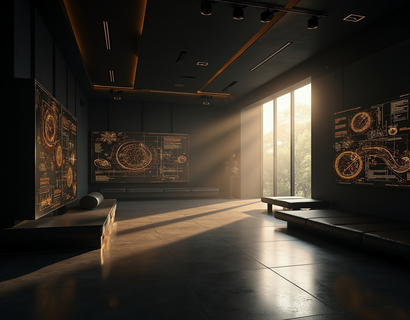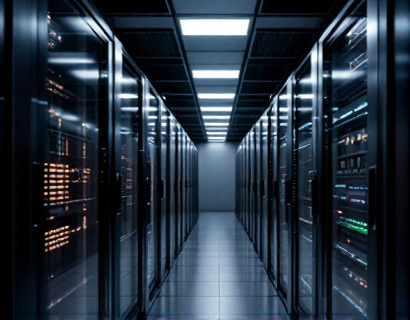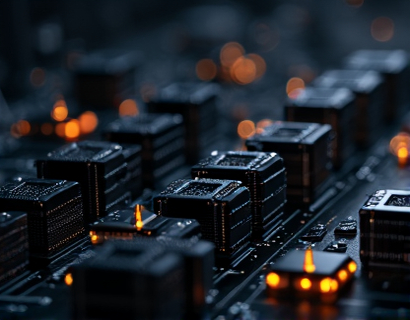Smart Solarium Tech: Revolutionizing Indoor Gardening with Advanced Automation and Climate Control
In the realm of modern gardening, the integration of advanced technology has opened new horizons for indoor plant enthusiasts. Smart solarium technology represents a significant leap forward, transforming traditional indoor gardens into sophisticated ecosystems. This article delves into the world of smart solarium tech, exploring how advanced automation and climate control solutions can optimize your indoor gardening experience. From customizable light spectra to precise temperature management, these innovations ensure that your plants thrive in a controlled environment, regardless of external conditions.
Understanding Smart Solarium Technology
Smart solarium technology encompasses a range of advanced systems designed to create an ideal environment for plant growth indoors. These systems integrate various components such as LED lighting, climate control, and automation to simulate the perfect growing conditions. The core idea is to replicate the natural environment that plants would experience outdoors, but with the added benefits of year-round consistency and control.
The term "smart" refers to the use of sensors, microcontrollers, and software that work together to monitor and adjust the growing conditions in real-time. This level of precision ensures that each plant receives exactly what it needs, when it needs it, leading to healthier growth and higher yields. For indoor gardening enthusiasts, this technology means a more reliable and efficient way to cultivate a wide variety of plants, from delicate orchids to robust vegetables.
Advanced Lighting Solutions
Light is one of the most critical factors in plant growth, and smart solarium technology offers advanced lighting solutions that go beyond traditional grow lights. LED grow lights, for instance, are highly efficient and can be tailored to emit specific wavelengths of light that are most beneficial for different stages of plant development. These lights can simulate the full spectrum of sunlight or focus on particular bands such as blue for vegetative growth and red for flowering.
One of the key advantages of LED lighting is its energy efficiency. Unlike traditional high-intensity discharge (HID) lights, LEDs consume less power and generate minimal heat, reducing the risk of overheating and the need for extensive cooling systems. Additionally, LEDs have a longer lifespan, which means fewer replacements and lower maintenance costs. Smart systems can further optimize light usage by adjusting intensity and duration based on the plants' needs and the time of day, mimicking natural daylight cycles.
Climate Control Systems
Maintaining the right climate is essential for optimal plant growth. Smart solarium technology includes advanced climate control systems that monitor and regulate temperature, humidity, and air circulation. These systems use a network of sensors placed throughout the growing area to collect data on environmental conditions. The data is then processed by a central control unit that adjusts the climate as needed to maintain ideal conditions.
Temperature control is crucial, as most plants have specific temperature ranges for optimal growth. Smart systems can heat or cool the environment using heating mats, fans, or HVAC units, ensuring that the temperature remains within the desired range. Humidity control is equally important, as both too much and too little moisture can negatively impact plant health. Smart humidifiers and dehumidifiers can be integrated into the system to maintain the perfect balance.
Air circulation is another critical factor, as it helps prevent the buildup of stagnant air and reduces the risk of fungal diseases. Smart fans and vents can be programmed to create optimal airflow patterns, ensuring that all plants receive fresh air and consistent conditions. This not only promotes healthy growth but also enhances the overall efficiency of the growing environment.
Automation and Remote Monitoring
One of the most transformative aspects of smart solarium technology is automation. By automating various processes, gardeners can save time and effort while ensuring that their plants receive consistent care. Automation can be applied to lighting, climate control, and even nutrient delivery systems.
For example, automated lighting systems can be set to turn on and off at specific times, simulating a natural day-night cycle. Climate control systems can be programmed to adjust settings based on the time of day, the stage of plant growth, or even weather forecasts. Nutrient delivery systems can be automated to provide the right amount of nutrients at the right intervals, reducing the risk of over- or under-fertilization.
Remote monitoring is another feature that enhances the convenience of smart solarium technology. Through a mobile app or web interface, gardeners can monitor and control their indoor garden from anywhere. This allows for real-time adjustments and immediate responses to any issues that may arise, such as a sudden drop in temperature or a malfunctioning light.
Customizable Setups for Unique Needs
Every indoor garden is unique, with different plants having specific requirements for light, temperature, and humidity. Smart solarium technology offers the flexibility to create customizable setups that cater to these individual needs. By inputting the specific requirements of each plant, the system can be tailored to provide the optimal growing conditions for a diverse collection.
For instance, a gardener growing both tropical plants and succulents can set different zones within the solarium, each with its own climate and lighting profile. The system can switch between these profiles as needed, ensuring that each plant receives the environment it requires. This level of customization not only enhances plant health but also maximizes the use of space, allowing for a more diverse and productive indoor garden.
Sustainability and Energy Efficiency
Sustainability is a key consideration in modern gardening, and smart solarium technology aligns perfectly with these values. By using energy-efficient LED lights and optimizing climate control, these systems significantly reduce energy consumption compared to traditional methods. The precise control over environmental conditions also means that resources are used more efficiently, reducing waste and lowering costs.
Additionally, many smart solarium systems incorporate renewable energy sources, such as solar panels, to further reduce the environmental impact. This not only makes indoor gardening more sustainable but also more cost-effective in the long run. For environmentally conscious gardeners, smart solarium technology offers a way to cultivate plants while minimizing their carbon footprint.
Enhancing Plant Health and Yield
The benefits of smart solarium technology extend beyond convenience and efficiency; they directly contribute to improved plant health and higher yields. By providing consistent and optimal growing conditions, plants are less likely to suffer from stress-related issues such as leaf burn, root rot, or pest infestations. The precise control over light, temperature, and humidity creates an environment where plants can grow strong and healthy.
Moreover, the ability to monitor and adjust conditions in real-time allows gardeners to quickly address any issues that may arise. For example, if a plant shows signs of nutrient deficiency, the automated nutrient delivery system can be adjusted to provide the necessary nutrients. This proactive approach to plant care can lead to faster growth, larger harvests, and higher-quality produce.
Challenges and Considerations
While smart solarium technology offers numerous advantages, there are also challenges and considerations to keep in mind. One of the primary factors is the initial investment cost. High-quality smart systems can be expensive, especially for larger setups. However, the long-term benefits in terms of plant health, yield, and reduced resource consumption often justify the investment.
Another consideration is the complexity of setting up and maintaining a smart solarium system. While many systems are designed to be user-friendly, some level of technical knowledge may be required to optimize the settings and troubleshoot any issues. Gardening enthusiasts without a technical background may find it helpful to seek guidance from experts or online resources to fully leverage the technology.
Power reliability is also an important factor. Since smart systems rely on electricity to function, any power outages can disrupt the growing environment. Backup power solutions, such as uninterruptible power supplies (UPS), can help mitigate this risk, ensuring that the system continues to operate during temporary power losses.
Future Trends in Smart Solarium Technology
The field of smart solarium technology is rapidly evolving, with ongoing advancements promising even more sophisticated and user-friendly solutions. One area of development is the integration of artificial intelligence (AI) and machine learning, which can further enhance the system's ability to adapt to plant needs and environmental changes.
AI-powered systems can analyze data from various sensors to predict plant requirements and make autonomous adjustments. For example, the system could learn the specific growth patterns of different plants and optimize the growing conditions accordingly, reducing the need for manual intervention. This level of intelligence can make indoor gardening even more accessible and efficient.
Another trend is the development of more compact and modular systems, making it easier for gardeners with limited space to set up a smart solarium. These modular units can be combined and reconfigured as needed, providing flexibility and scalability. This is particularly beneficial for urban gardeners or those with small indoor spaces.
Conclusion
Smart solarium technology represents a significant advancement in indoor gardening, offering a range of benefits that enhance plant health, efficiency, and sustainability. By integrating advanced lighting, climate control, and automation, these systems create a thriving ecosystem that can be tailored to meet the unique needs of any garden. While there are challenges to consider, the long-term advantages make smart solarium technology an exciting and worthwhile investment for serious indoor gardeners.
As the technology continues to evolve, we can expect even more innovative solutions that further simplify and enhance the indoor gardening experience. Whether you are a seasoned gardener or just starting out, embracing smart solarium technology can transform your indoor space into a high-tech oasis where plants flourish year-round.










































